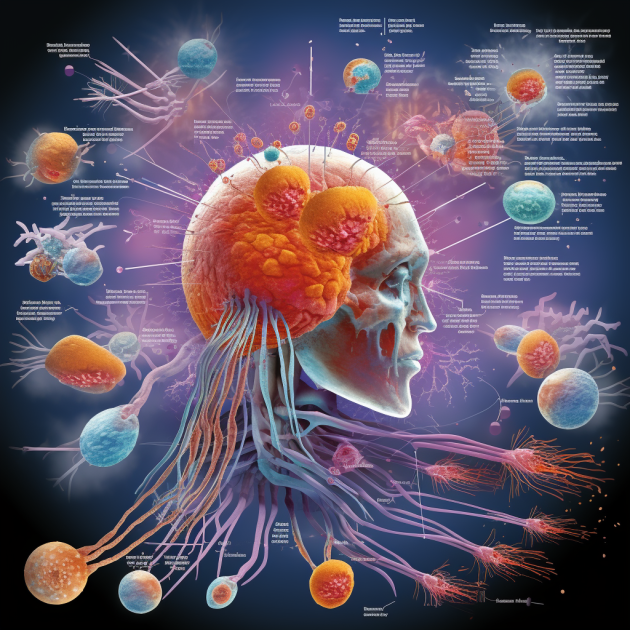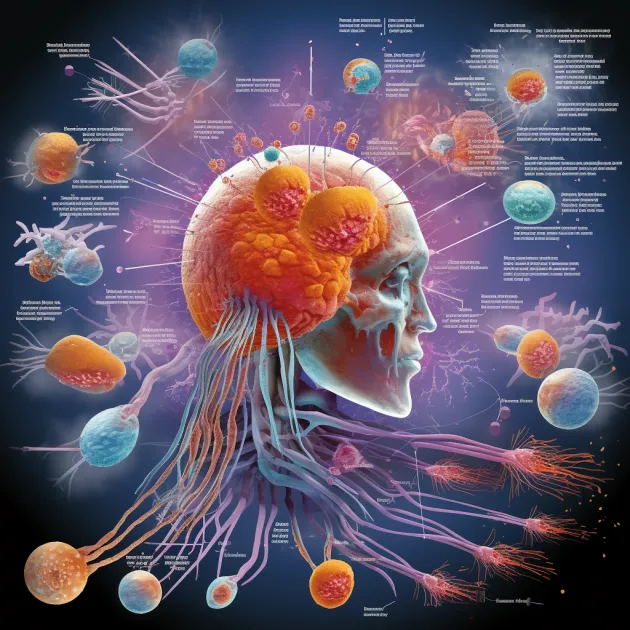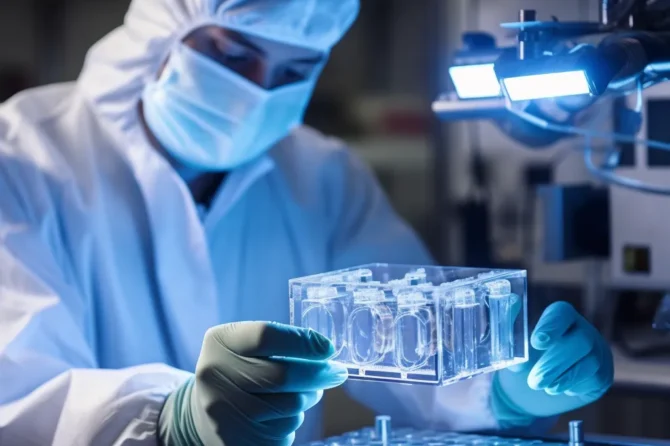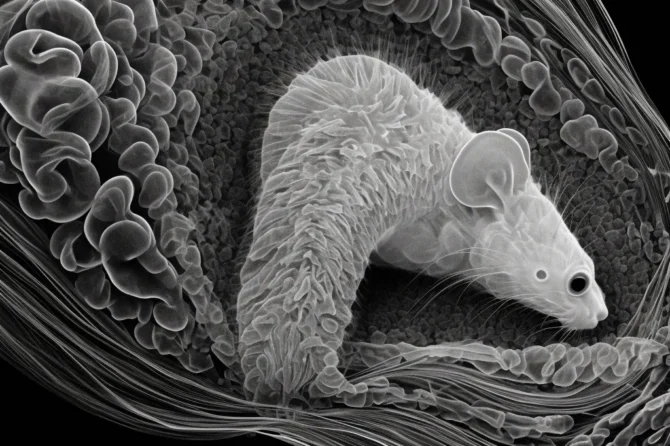Abstract:
Sarcomas, a group of rare and challenging-to-treat tumors, demand urgent development of effective therapeutic strategies. This study delves into the role of the MEK5/ERK5 signaling pathway in sarcomagenesis and its potential as a therapeutic target for sarcoma treatment. Employing patient samples, in silico analyses, and cellular and animal models, the research investigated ERK5 expression, its correlation with patient survival, and the functional relevance of the MEK5/ERK5 pathway in sarcoma development. Additionally, the study assessed the efficacy of pharmacological inhibition of MEK5 and ERK5 in suppressing sarcoma cell proliferation and tumor growth. The results shed light on the dysregulation of the MEK5/ERK5 pathway in sarcomas, providing novel insights into its therapeutic implications.
Patient samples provided crucial insights into the dysregulated ERK5 expression in sarcomas, with most subtypes displaying higher ERK5 levels compared to normal tissues. Variations in ERK5 expression between samples, including the identification of different ERK5 bands, further emphasized the complexity of ERK5 dysregulation in sarcomas.
These findings underscore the need for personalized approaches in targeting the MEK5/ERK5 pathway for effective therapeutic interventions. An important clinical finding was the significant negative correlation between elevated ERK5 expression and patient survival. Sarcoma patients with high ERK5 levels exhibited notably shorter median survival times compared to those with low expression levels. This observation indicates that ERK5 expression could serve as a valuable prognostic biomarker, aiding in risk stratification and informing treatment decisions for sarcoma patients.
Furthermore, functional studies using sarcoma cell lines and ERK5 knockout clones generated through CRISPR/Cas9 gene editing provided compelling evidence of the MEK5/ERK5 pathway’s functional relevance in sarcomagenesis. Genetic knockdown of MEK5 and ERK5 resulted in decreased sarcoma cell proliferation, reinforcing the critical role of this pathway in promoting tumor growth.
In vitro experiments examining pharmacological inhibition of MEK5 and ERK5 demonstrated promising results in reducing sarcoma cell proliferation. Additionally, the inhibition of ERK5 showed efficacy in attenuating tumor growth in mouse xenograft models derived from sarcoma cells. These preclinical findings provide a solid basis for further investigation of MEK5/ERK5 inhibitors in clinical trials, potentially leading to improved therapeutic outcomes for sarcoma patients.
Introduction:
Sarcomas, a heterogeneous group of malignancies arising from mesenchymal tissues such as bone, muscle, and connective tissues, pose significant challenges in the field of oncology. Their rarity, diverse histological subtypes, and complex biological behaviors make them particularly difficult to diagnose and treat effectively. While conventional therapeutic approaches like surgery, radiation, and chemotherapy have been the mainstay of sarcoma treatment, they often fall short in providing long-term and durable responses, leading to a pressing need for more advanced and innovative treatment strategies. As sarcomas continue to present formidable obstacles in clinical practice, researchers and clinicians are compelled to explore novel therapeutic targets that can offer new hope to patients battling these aggressive and enigmatic tumors.
In the ever-evolving landscape of cancer research, the dysregulation of signaling pathways has emerged as a critical aspect underlying tumorigenesis and disease progression. Sarcomas, like many other cancers, are characterized by aberrant signaling cascades that contribute to uncontrolled cell growth and survival. This characteristic has driven the development of targeted therapies, which aim to disrupt specific molecules and pathways responsible for driving tumor growth. One such pathway that has garnered increasing attention in sarcomas is the MEK5/ERK5 signaling pathway.
This intricate network of cellular communication is involved in regulating essential processes such as cell proliferation, survival, and differentiation. The central player in this cascade, MEK5, functions as a mitogen-activated protein kinase kinase, activating the downstream effector, ERK5, through phosphorylation. Activation of ERK5, in turn, sets off a series of downstream signaling events that ultimately control gene expression, contributing to cellular responses crucial for tumor development and progression.
Despite the promising implications of the MEK5/ERK5 signaling pathway in other cancers, its role in sarcomas remains relatively unexplored, necessitating comprehensive investigation. Understanding the involvement of this pathway in sarcomas holds the potential to unlock new therapeutic opportunities and improve patient outcomes. By scrutinizing the dysregulation of MEK5/ERK5 in sarcomas and exploring its functional relevance, researchers aim to shed light on its potential as a therapeutic target.
By uncovering the mechanisms driving tumor growth and survival, novel targeted therapies can be developed to specifically intervene in sarcoma progression. As the quest for more effective treatment strategies intensifies, the exploration of the MEK5/ERK5 pathway presents a promising avenue for the advancement of precision medicine in the fight against these challenging and diverse malignancies.
Methods Used To Understand MEK5/ERK5 in Sarcomas:
To investigate the role of the MEK5/ERK5 pathway in sarcomas, this study employed a multidisciplinary approach combining patient samples, in silico analyses, cellular models, and animal models. Frozen tumor samples from patients with various sarcoma subtypes, including leiomyoma, leiomyosarcoma, lipoma, liposarcoma, malignant peripheral nerve sheath tumor (MPNST), schwannoma, rhabdomyosarcoma, and undifferentiated pleomorphic sarcoma (UPS), were obtained from the University Hospital of Salamanca.

Paired normal tissue samples were also collected for comparison. The expression levels of ERK5 and MEK5 proteins were analyzed using immunoprecipitation and Western blotting techniques. ERK5 expression levels were quantified and analyzed for associations with patient survival.
In silico analyses were conducted utilizing large-scale datasets, including the TCGA PanCancer Atlas studies in the cBioPortal bioinformatic tool. Molecular alterations of MEK5 and ERK5 in different tumor types, including sarcomas, were evaluated. Copy number alterations and mRNA expression levels of ERK5 and MEK5 across various tumor types were analyzed using the Firebrowse database and the Gene Expression Viewer tool in Firebrowse and the GEPIA2 database.
To assess the functional relevance of the MEK5/ERK5 pathway in sarcomas, cellular models were utilized. Sarcoma cell lines representing different subtypes were cultured and subjected to genetic knockdown using lentivirus-mediated RNA interference targeting MEK5 and ERK5. The impact of MEK5 and ERK5 knockdown on cell proliferation was evaluated using cell proliferation and clonogenic assays. In addition, CRISPR/Cas9 gene editing techniques were employed to generate ERK5 knockout clones, allowing for the assessment of the proliferation capabilities of ERK5-deficient sarcoma cells.
Animal models, particularly mouse xenograft models, were used to investigate the effects of pharmacological inhibition of the MEK5/ERK5 pathway on sarcoma tumor growth. Specific inhibitors of MEK5 and ERK5 were utilized in in vitro and in vivo experiments to determine their efficacy in suppressing sarcoma cell proliferation and impeding tumor growth.
Results Found Using MEK5/ERK5 in Sarcomas:
The analysis of patient samples provided critical insights into the dysregulated ERK5 expression in sarcomas. Across various sarcoma subtypes, the majority exhibited higher ERK5 expression levels compared to adjacent normal tissues, suggesting a potential role for ERK5 in sarcomagenesis. Importantly, the observed variations in ERK5 expression levels among different samples, along with the identification of different bands, including a truncated variant in one sample, underscore the heterogeneity and complexity of ERK5 dysregulation in sarcomas. These findings highlight the need for a personalized approach in targeting the MEK5/ERK5 pathway for the management of sarcoma patients.
A significant finding in this study was the strong negative correlation between elevated ERK5 expression and patient survival. Patients with high levels of ERK5 had notably shorter median survival times compared to those with low expression levels, indicating the prognostic significance of ERK5 in sarcomas. This finding has profound implications for clinical practice, as ERK5 expression levels could serve as a potential prognostic biomarker to stratify patients based on their risk profiles and tailor treatment plans accordingly.
The functional studies using sarcoma cell lines further supported the importance of the MEK5/ERK5 pathway in sarcomagenesis. Genetic knockdown of MEK5 and ERK5 resulted in a significant reduction in sarcoma cell proliferation, underscoring the critical role of this pathway in promoting cell growth. The CRISPR/Cas9-mediated gene editing techniques used to generate ERK5 knockout clones provided direct evidence of ERK5’s indispensability for sarcoma cell proliferation. The compromised proliferation capabilities of ERK5-deficient sarcoma cells further validate the therapeutic potential of targeting the MEK5/ERK5 pathway to curtail tumor growth.
The pharmacological targeting of the MEK5/ERK5 pathway using specific inhibitors showed promising results in inhibiting sarcoma cell proliferation. In vitro experiments demonstrated that inhibition of MEK5 or ERK5 significantly reduced the proliferation of sarcoma cells, pointing to the potential efficacy of these targeted inhibitors in halting tumor growth. The in vivo studies using mouse xenograft models provided further validation of the therapeutic potential of MEK5/ERK5 inhibitors, as treatment with an ERK5 inhibitor led to a notable attenuation of tumor growth.
Collectively, these results provide compelling evidence for the dysregulation of the MEK5/ERK5 pathway in sarcomas and its critical role in promoting tumor development and progression. The observed prognostic significance of ERK5 expression in sarcoma patients highlights its potential as a valuable clinical biomarker. Moreover, the functional and pharmacological studies offer promising prospects for targeting the MEK5/ERK5 pathway as a viable therapeutic strategy in the treatment of sarcomas. These findings lay the groundwork for further investigations and the development of personalized therapeutic approaches, ultimately advancing the field of sarcoma management and improving patient outcomes.
Conclusion:
In conclusion, the findings from this comprehensive study provide strong evidence for the dysregulation of the MEK5/ERK5 pathway in sarcomas and its critical role in driving tumor development and progression. The observed correlation between elevated ERK5 expression and poor patient survival suggests its potential as a prognostic biomarker, offering valuable insights into patient outcomes and treatment planning. Moreover, the functional studies demonstrating the therapeutic relevance of targeting the MEK5/ERK5 pathway highlight the significant promise of this approach in tackling sarcomas.
The potential of MEK5/ERK5 inhibitors as promising candidates for future sarcoma treatment strategies holds considerable hope for improving patient outcomes. However, further research and development efforts are essential to optimize these inhibitors, enhancing their efficacy and safety profiles for clinical applications. Rigorous investigation of combination therapies that target multiple pathways in tandem, along with identifying predictive biomarkers for treatment response, may lead to even greater therapeutic successes in sarcoma patients.
The journey to fully understand the underlying molecular mechanisms and validate the therapeutic potential of targeting the MEK5/ERK5 pathway is ongoing. It necessitates continued efforts in conducting robust clinical trials to evaluate the efficacy and safety of these inhibitors in sarcoma patients. Collaborative endeavors between researchers, oncologists, and pharmaceutical companies are crucial to accelerate the translation of these preclinical findings into clinically viable treatment options.
Ultimately, the successful implementation of targeted therapies against the MEK5/ERK5 pathway has the potential to significantly improve the prognosis and quality of life for individuals battling sarcomas. By offering more effective and precise treatment options, this research presents new hope in the battle against these challenging and diverse malignancies.
The dedication to understanding and harnessing the full therapeutic potential of the MEK5/ERK5 pathway represents a beacon of progress in the pursuit of better sarcoma management and patient care. As the scientific community continues to unravel the complexities of sarcoma biology, we move closer to a future where effective treatments will transform the landscape of sarcoma care and provide renewed optimism for patients and their families.
If you need more information on this article click on the following link. This link will provide more extensive information and elaborate on the topic.
Genomic.News is your ultimate source for curated news, articles, and updates on the fascinating world of genomics. Our platform brings together the latest scientific breakthroughs, research advancements, and industry developments in one centralized hub. Stay informed about the cutting-edge discoveries, transformative technologies, and ethical considerations driving the field of genomics. Explore the intersection of genetics and healthcare, agriculture, biotechnology, and beyond.





